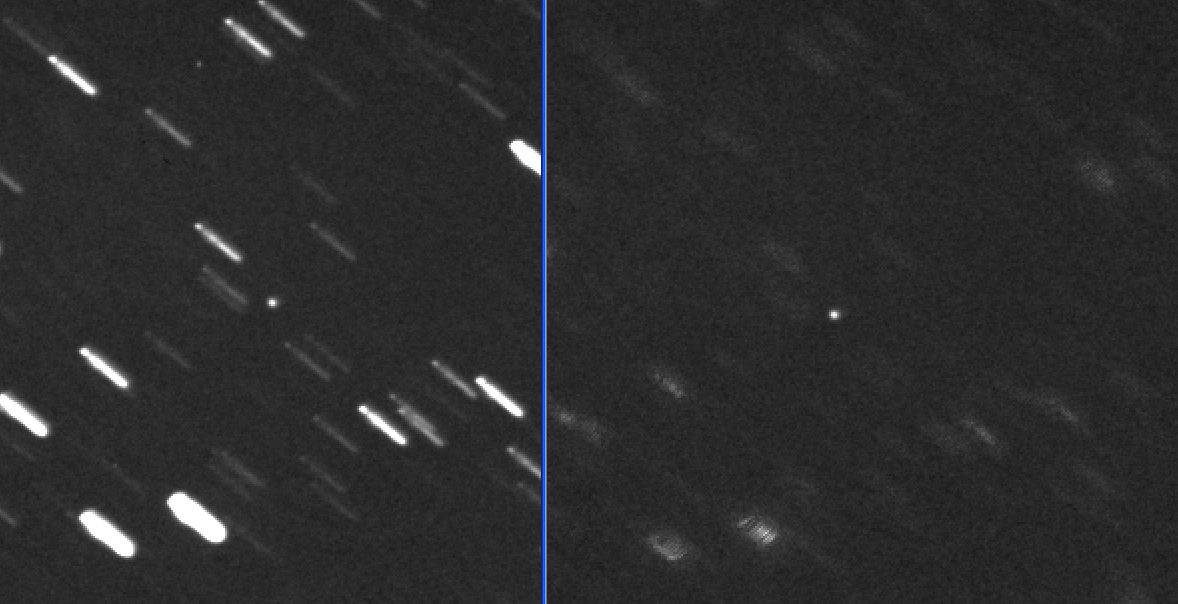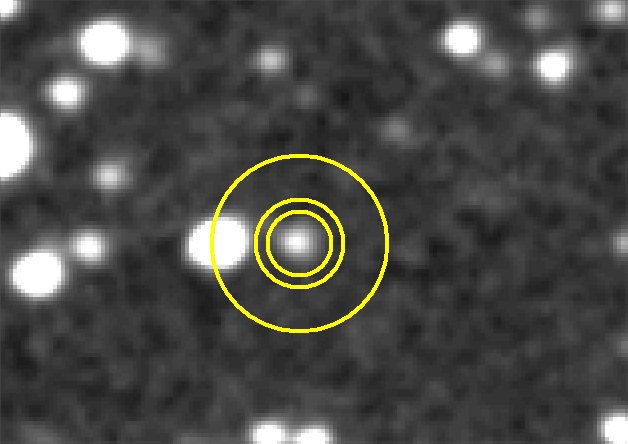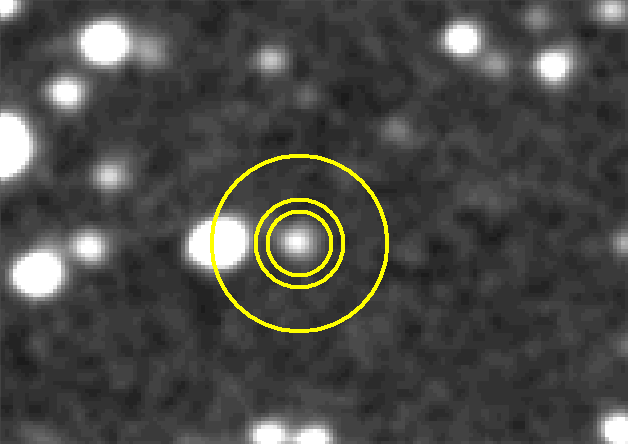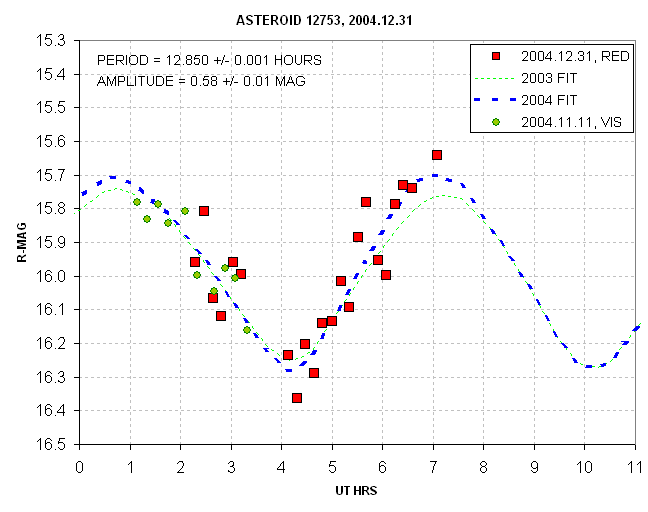PHOTOMETRY FOR DUMMIES: OBSERVING TIPS
Bruce L. Gary, Hereford Arizona Observatory (G95)
Last updated 2005.01.04
Definitions
SE = standard error uncertainty; the orthogonal sum of SEs and SEc;
SE
= SQRT (SEs2 + SEc2)
SEs = stochastic SE; SEs = 1 / SNR in magnitude units (when SNR >
10).
SEc = calibration SE; usually estimated. Check stars offer quick
estimate of lower limit to SEc, as do multiple measurements of a single
star. For faint asteroids SEs > SEc.
Photometer signal circle = the circular aperture containing star light
to be measured
Sky background reference annulus = the outermost annulus, with a gap
annulus between it and the signal circle, used to determine an average
level for subtracting from the signal circle readings
Intensity = sum of counts above background level; sum is performed
within a circular photometry aperture; background level is established
using an annulus (outside a gap annulus)
Good Observing Practices
Median Combining
It is a good practice to work with images that are a median combine
of 3 or more images (that have been dark frame and flat field
calibrated). This usually is not done for asteroid search programs
since triplets (or quadruplets) of images are taken of a specific star
field, each image >20 minutes after the preceding one, and this
image set is used to search for moving targets. Photometrists median
combine before doing photometry because this process removes cosmic ray
artifacts. Fortunately, it is still possible to remove the effect of
cosmic ray artifacts using a set of 3 or more images of an asteroid.
This can be done by median combining using the asteroid for image
alignment. In such an image the background stars disappear leaving only
an asteroid feature. There are two advantages for doing this: 1) the
asteroid feature has improved SNR, and 2) nearby stars are much less
likely to interfere with photometry since they are removed by the
median combining process. Combining images can also be done by
averaging, but in this case you actually increase the chances of having
nearby stars interfere with photometry. Here's an example comparing
averaging and median combining (using the asteroid for
alignment in
both cases).

Figure 1. Two versions of combining 14 images of asteroid
2004 MN4 (V-mag = 16.88 +/- 0.15 SE). Left panel shows averaging (using
the asteroid
for aligning), and the right panel shows median combining (also using
the asteroid for alignment). [Celestron 14-inch, prime focus
f/1.86,
SBIG ST-8XE, red filter, total of 14 60-second exposures, unfiltered;
2005.01.08;
Hereford, AZ]
Median combining may incur a ~15% SNR penalty, but it removes cosmic
ray defects and it reduces the brightness of star tracks due to the
asteroid's motion. Notice that a cosmic ray is visible in the
upper-left region of the left panel. The reduction of star track
brightness can be an advantage when doing photometry with a large sky
reference annulus.
Pixel Editing
Professionals would be "horrified" to learn that someone was suggesting
"pixel editing" to recover an image for photometric analysis. But
that's what I'm going to do. Here's the situation where I recommend it.

Figure 2. Animation of Asteroid 12753 passing by a
bright star. This 26-frame sequence shows motion during a 5-hour period
(2004.12.31).
Notice that about 1/3 of the way through the sequence the asteroid
appears to fade. This set of observations was made for the purpose of
establishing a rotation light curve. But what can be done to minimize
the effects of the bright interfering star? Should this data be
rejected simply because it would spoil the signal aperture reading, or
spoil the sky background reference annulus reading? Here's the problem,
using Frame #10 as an example.

Figure 3. Frame 10 (enlarged) from the above sequence, showing
the "problem star" east of the asteroid (at center of aperture
circles).
The solutionis to "pixel edit" the problem star away.

Figure 4. Pixel editing was used to "remove" the problem
star, permitting the use of a better quality "sky background reference
annulus."
The final rotation light curve appears to be unaffected by this problem
star and a few other fainter ones that were dealt with in the same
manner, as the following graph shows.

Figure 5. The red squares are from the 26-frame sequence
from 2004.12.31, using an R-filter. Only one frame could not be
"rescued" from the effects of nearby stars. The pixel editing example
in the previous figure led to the data point at UT = 4.1 hours. The
2004.11.11 data (green circles) are V-filter observations and they have
been adjusted by -1.6 magnitudes to achieve agreement with the
R-filter rotation light curve. A full rotation occurs each 12.85 hours.
The rescue work appears to have been successful since the rotation
light curve is consistent with data from a month before and a year
before that. I therefore recommend pixel editing for the rcovery of
images that are affected by nearby interfering stars.

Return to Photometry for Dummies
____________________________________________________________________
This site opened: January
1,
2005. Last Update: January
2,
2005


